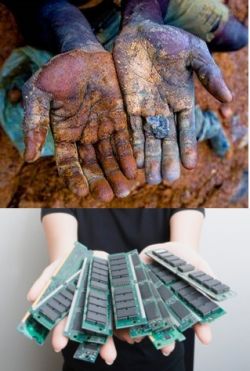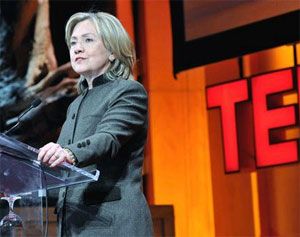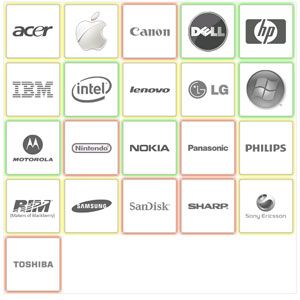Conflict Minerals Explained: Gadget Obsessions Fuel Congo's Conflict

The average American spends about $1,200 a year on consumer electronics. That includes everything from mobile phones, laptops, and MP3 players to televisions and game consoles. And every time a consumer buys one of these products, they may be directly contributing to the continuing conflict in the Democratic Republic of Congo. This strife has claimed millions of lives, turned children into soldiers, and grown into the “deadliest conflict in the world since World War II” according to John Pendergrast, founder of the Enough Project.
Yes, this is a bold and disturbing statement to make. After all, how can buying a laptop or upgrading a smart phone possibly make us complicit in all of that?
It’s not the products themselves that are the problem, but what’s inside them. Most of the consumer electronics sold in the U. S. contain metals in high demand by manufacturers: gold, tantalum, tin, and tungsten. Though mined globally, these minerals are found in the Congo, and the mines there are controlled by local militias. It’s these groups that commit heinous human rights violations against the Congolese people and benefit from the world’s seemingly insatiable appetite for new gadgets.
Thanks to a provision in the Dodd-Frank Wall Street Reform and Consumer Protection Act, companies that sell products to American consumers will now have to account for the origins of these metals and the minerals they come from in their supply chain. And non-profit organizations such as the Enough Project and Global Witness are working to develop a certification scheme similar to the Kimberley Protocol for blood diamonds. But it’s going to take pressure from consumers to bring about the advent of truly conflict-free technology.
The Elementals
What are the minerals being used in your electronics, and where are they coming from?
Gold (Au): This element is used for its corrosion-resistant properties. It is also a good thermal and electrical conductor. Gold is mined in nearly every country of the world, including Australia, Brazil, Canada, Egypt, Indonesia, New Zealand, South Africa, the United States, and the Democratic Republic of Congo.
Stay in the know with Laptop Mag
Get our in-depth reviews, helpful tips, great deals, and the biggest news stories delivered to your inbox.
Tantalum (Ta): Made from coltan and used to make electronic capacitors that store energy for phones, laptops, and more. Currently being mined in Australia, Brazil, Canada, China, Ethiopia, Malaysia, Mozambique, Thailand, and the Democratic Republic of Congo.
Tin (SnO2): Made from cassiterite and used as a solder on circuit boards for phones, laptops, and MP3 players. Currently being mined in Bolivia, Indonesia, Malaysia, Russia, Thailand, as well as the Democratic Republic of Congo.
Tungsten (W): Made from wolframite and used in light bulb filaments and to make phones and laptops vibrate. Currently being mined in Austria, China, Columbia, Portugal, Russia, and the Democratic Republic of Congo.
The Seeds of Conflict
Three of the four precious metals used for electronics—tantalum, tin, and tungsten, known collectively as the Three Ts—are refined versions of mineral ores. Tin is made from cassiterite, tantalum from coltan, and tungsten from wolframite. Each is found and mined around the world, even in the U.S., but around 12 percent of the global supply of the three Ts comes from the Congo. The International Peace Information Service (IPIS) has identified more than 200 mines in the region. Overall, the Enough Project estimates that armed groups control more than 50 percent of these mines and 12 out of the 13 largest mines. Some of the soldiers belong to warring militias, but some of the mines are run by elements of the Congolese army, a violation of that country’s laws.
The groups that control the mines not only commit human rights abuses against the miners—including poor wages and dangerous working conditions—but also the surrounding populations. Militia groups regularly commit heinous acts of gender violence against the women and girls in the region. In fact, rape and murder are so common that the Congo is often identified as the worst place in the world to be a girl or woman. It’s partially because these groups are so well-funded that they can continue their reign. And much of that money comes from the sale of conflict minerals.
A Complicated Path to Market
Of course, these conflict minerals don’t travel directly from the mines to the technology companies that use the metals. From the mines, they go to trading houses, then to export companies, and from there to neighboring countries where the minerals are sometimes mixed in with that country’s exports or simply identified as coming from the secondary country, not the Congo.
The minerals are sold to mostly East Asian metal processing companies, which refine them into metals. Once the smelting process is complete, there’s no way to discern the origin of the metals, as the ore is mixed in with multiple sources. Finally, the refiners sell the metals to electronics companies, who then use them in their products. The path to the manufacturer is certainly a winding one, and there is little oversight, so all companies involved can easily skirt already poorly enforced laws.
Where do each of the metals end up once they’re sold to electronics companies? Everywhere. Tantalum, which has been called the most significant of the four, is used in the production of capacitors and to store electricity in devices. Tin is used as solder on circuit boards, tungsten allows phones to vibrate, and gold is used to coat electrical contacts and wiring. Every consumer electronics company utilizes these metals, and there are currently no products or brands that can be identified as 100 percent “conflict free.”
Raising Awareness

Raise Hope for Congo campaign manager Candice Knezevic in Washington on International Women's Day (credit: UPI/Madeline Marshall)
Non-profit and non-governmental organizations have been raising awareness about conflict minerals for some time, and recently global governments have taken more steps toward making accountability part of their laws. In the U.S., a conflict minerals provision was included in the Wall Street Reform and Consumer Protection Act, signed into law in July of 2010. It requires companies that sell electronics in the U.S. to audit and disclose the origins of the minerals used in their products.
Additionally, the State Department is charged with addressing the issue of the link between these minerals and human rights abuses. Both the Secretary of State and the Securities and Exchange Commission must help develop fair auditing practices for companies and provide assistance in tracing mineral sources.
Up until the passage of the financial reform bill, electronics companies weren’t required to do any supply chain auditing for the U.S. market, though they have been aware of the issue since early in the last decade. Some corporations, such as HP, Motorola, Nokia, and RIM, require written assurances from suppliers that their minerals don’t come from illegal mines. However, as the Enough Project points out, these assurances do not always constitute actual proof, nor are these claims verified by independent sources.
Today, more than 50 of the top global technology companies belong to the Electronics Industry Citizenship Coalition (EICC), a group that works to improve social responsibility in industry supply chains. However, there is still a wide gap between what should be done and what corporations feel they can do today. “Mines and smelters are several tiers away from Sony’s direct suppliers, and we don’t have influences over such remote suppliers,” a company spokesperson said. Dell also acknowledged the same issue, stating that “traceability is very difficult,” and thus they “cannot guarantee that certain minerals used . . . do not come from the Congo.”
Sniffing Out the Smelters
While NGOs and activist groups also acknowledge the difficulty in tracing the path of conflict minerals, it’s not impossible. When considering solutions to this complex problem, Intel found that “the most likely point in the chain that we can control is the smelters who refine the materials. So we have focused on them,” according to a company spokesperson.
Acer and Nokia are also involved in developing a smelter auditing/validation program. As Nokia pointed out on its blog last August, smelters are “in a pivotal position” where the source minerals can still be identified. An Acer spokesperson emphasized that “addressing the mining issue will be more effective on a collective basis,” a view that was echoed by all of the manufacturers we interviewed.
Right now, the main roadblock to solving the conflict mineral crisis is the lack of a credible verification system, a problem that won’t be solved right away. And the overall conflict in the region can’t be addressed by corporations alone. “[T]he primary responsibility for peace in the Democratic Republic of Congo lies in the hands of governments and the international community,” said Nokia spokesperson Saara Tahvanainen.
More Intervention Required

“As someone who speaks to governments and NGOs and industry groups, there is a lot of interest in having [a certification] process,” says Sasha Lezhnev, executive director of the Grassroots Reconciliation Group and co-founder of the group’s conflict mineral campaign in association with the Enough Project. “Right now you basically have 15 different people trying to add in spare parts to make a car. But there’s no actual engineer that’s overseeing the process.” Lezhnev says he would like to see Secretary Clinton be that engineer, with the State Department acting as a convener for the process.
Still, the government can only go so far. The law only stipulates that companies must make a good faith effort to trace the source of the minerals used, but doesn’t mandate that companies have to make conflict-free products.
“[The law] is only one part of the equation,” Lezhnev cautions. “The electronics industry has to be an active player and has a choice of whether it’s going to drag its feet on this process or whether it can be a proactive player in blowing the whistle on companies down the supply chain that are trading in conflict minerals.”
What You Can Do

With the financial reform act in place and an ongoing global effort to both raise awareness and halt the flow of money to militia groups in the Congo, consumers may feel that there’s nothing they can or need to do directly to combat the conflict mineral issue. That’s not the case.
Now that supply chain audits will be mandatory, consumers can better inform themselves about the companies that make the products they buy. The results from the SEC’s audits may not be available until the third quarter of 2011. In the meantime, the Enough Project has ranked 21 top electronics manufacturers, rating them based on their efforts to eliminate conflict minerals up until the study’s release this month. Consumers should not only take note of which companies have more favorable ratings, but let the companies lower on the list know that your future purchases depend on their progress in this area.
The next piece of technology you buy may not be completely conflict-free, and your decision to buy it won’t magically make the fighting end. But financial pressure is an important first step. And through the combined efforts of more vigilant governments and electronics makers, as well as more educated consumers, Congolese militias could eventually find their funds cut off. And that could make the region safer, step by step, for everyone.
